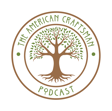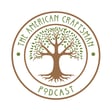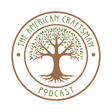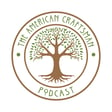
The American Craftsman Podcast Ep. 21 | Shop Upgrades
On Episode 21 of The American Craftsman Podcast, hosted by Greene Street Joinery, we discuss some upcoming shop upgrades.
Beer of the Week (Paradox Brewing Pina Cielo): https://untappd.com/b/paradox-beer-company-colorado-skully-barrel-no-57-pina-cielo/2323295
Tool of the Week: (Stahlwille 18mm Snap-Off Knife) https://www.kctoolco.com/stahlwille-12965-3-snap-off-blade-cutter-18-mm/
Greene Street Joinery is a custom design & build shop located in Monmouth County, New Jersey. We build multigenerational furniture with an eco-friendly and sustainable mindset.
Inspired and guided by the ideals of the Arts and Crafts movement, we believe in the use of traditional craftsmanship and simple, well-proportioned forms; sustainability and ethical practices; and importantly, taking pleasure in our work as craftsmen to create quality pieces of enduring value.
Follow us!
Instagram: https://www.instagram.com/greene_st_joinery Facebook: https://www.facebook.com/greenestreetjoinery
Support us on Patreon!
https://www.patreon.com/Greene_st_joinery
Visit Us at https://www.greenestreetjoinery.com/
And be sure to Subscribe to our channel for more videos like this one!
Support this podcast at — https://redcircle.com/the-american-craftsman-podcast/donations
Advertising Inquiries: https://redcircle.com/brands



